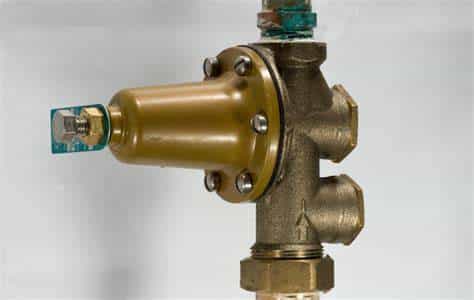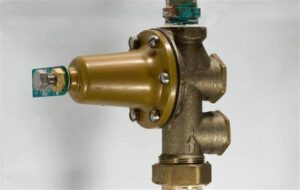▷How To Install Water Pressure Regulators At Your Property In San Diego?

How To Install Water Pressure Regulators At Your Property In San Diego?

Water pressure is an essential aspect of any plumbing system, and it can significantly impact the functionality and longevity of your pipes, fixtures, and appliances. High water pressure can lead to leaks, bursts, and other plumbing issues, while low water pressure can result in inadequate flow and inefficient water use. To maintain optimal water pressure in your home, it’s essential to install a water pressure regulator. In this article, we’ll discuss five ways to install water pressure regulators at your property to help you maintain a consistent and safe water pressure level.
Identify the Pressure Regulator Location
The first step in installing a water pressure regulator is to locate the main water supply line entering your property. Typically, you’ll find a water meter where the water supply enters your home. The water pressure regulator should be installed after the water meter and before the main shutoff valve. This ensures that the regulator controls the water pressure throughout your entire plumbing system.
Gather the Necessary Tools and Materials
Before you start the installation process, make sure you have all the required tools and materials on hand. You will need a water pressure regulator, a pipe cutter or hacksaw, pipe wrenches, Teflon tape, and fittings suitable for your plumbing system. Ensure that the regulator you choose is compatible with your water supply pipe size and pressure requirements.
Shut Off the Main Water Supply
To install the pressure regulator safely, you must turn off the main water supply. Locate the main shutoff valve and close it by turning the valve clockwise until it’s fully closed. This will prevent water from flowing into your home during the installation process.
Remove a Section of the Water Pipe
Using a pipe cutter or hacksaw, carefully remove a section of the water supply pipe where you plan to install the pressure regulator. Ensure that the cut is clean and straight. Be prepared for some water to drain from the pipe as you make the cut, so have a bucket or towels ready to catch any excess water.
Install the Water Pressure Regulator
With the section of the pipe removed, it’s time to install the water pressure regulator. Follow the manufacturer’s instructions for your specific regulator model, but in general, you’ll need to connect the regulator between the cut ends of the pipe. Use pipe wrenches to tighten the fittings securely. Apply Teflon tape to the threads of the fittings to create a watertight seal.
Once the regulator is in place and properly secured, open the main water supply valve slowly to allow water to flow back into your plumbing system. Gradually adjust the pressure setting on the regulator to your desired level. Most homeowners prefer a pressure range of 40 to 60 psi for optimal performance and water conservation.
FAQs
How Do I Know If I Need A Water Pressure Regulator?
Signs of high water pressure include banging pipes, leaky faucets, and damaged appliances. If you experience any of these issues, it’s a good idea to check your water pressure and consider installing a regulator if it’s too high.
Can I Install A Water Pressure Regulator Myself, Or Do I Need A Professional Plumber?
While it is possible to install a water pressure regulator yourself if you have some plumbing experience, it’s often best to hire a professional plumber to ensure proper installation and avoid any potential issues.
What Should I Do If I Experience Low Water Pressure?
Low water pressure can be caused by various factors, such as clogs or leaks in your plumbing system. Before installing a pressure regulator, it’s essential to diagnose the underlying cause of low pressure and address it accordingly. If you’re unsure, consult a plumber for guidance.
Installing a water pressure regulator at your property is a crucial step in maintaining a healthy plumbing system. It helps prevent potential damage to pipes, fixtures, and appliances due to excessive water pressure while ensuring consistent water flow throughout your home. By following the five steps outlined above, you can install a water pressure regulator safely and effectively. To speak with Home Kitchen Bath Remodeling, dial (619) 489-9819.
Conclusion
You can rely on Home Kitchen Bath Remodeling to complete your extension project on schedule and within budget. Call (619) 489-9819 to schedule your no-cost initial consultation.
Contact Home Kitchen Bath Remodeling today for al your remodeling needs.
BELOW ARE SOME OF THE MANY HOME INTERIOR SERVICES THAT WE OFFER
-
Kitchen BacksplashKitchen Backsplash
-
Kitchen CabinetsKitchen Cabinets
-
Kitchen CountertopsKitchen Countertops
-
Kitchen FaucetsKitchen Faucets
-
Kitchen LightingKitchen Lighting
-
Kitchen SinksKitchen Sinks
-
Kitchen TileKitchen Tile
-
Bathroom AdditionBathroom Addition
-
Bathroom CabinetsBathroom Cabinets
-
Bathroom FaucetsBathroom Faucets
-
Bathroom SinksBathroom Sinks
-
Bathroom TileBathroom Tile
-
Bathroom VanitiesBathroom Vanities
-
Shower DoorsShower Doors
-
Shower SystemsShower Systems
-
Basement RemodelingBasement Remodeling
-
Crown Moulding / BaseboardsCrown Moulding / Baseboards
-
Dining Room RemodelingDining Room Remodeling
-
Home Office RemodelingHome Office Remodeling
-
Living Room RemodelingLiving Room Remodeling
-
ADUADU
-
Disability / Mobility ADUDisability / Mobility ADU
-
Finished BasementFinished Basement
-
First StoryFirst Story
-
Garage ConversionGarage Conversion
-
Granny FlatGranny Flat
-
Second StorySecond Story
-
Engineered StoneEngineered Stone
-
Engineered WoodEngineered Wood
-
Green FlooringGreen Flooring
-
Hardwood FlooringHardwood Flooring
-
Laminate FlooringLaminate Flooring
-
Natural Stone FlooringNatural Stone Flooring
-
Tile FlooringTile Flooring
-
Kitchen TileKitchen Tile
-
Bathroom TileBathroom Tile
-
Pool TilePool Tile
-
Exterior TileExterior Tile
Related Posts

▷Tips to Install a Wood Countertop in Your Kitchen In San Diego
Tips to Install a Wood Countertop in Your Kitchen In San Diego Looking to upgrade your…

▷Essential Tools and Materials for Installing a Bathroom Vanity In San Diego
Essential Tools and Materials for Installing a Bathroom Vanity In San Diego Want to transform your…

▷Avoiding Mistakes: Installing a Bathroom Vanity and Sink In San Diego
Avoiding Mistakes: Installing a Bathroom Vanity and Sink In San Diego Did you know that updating…

▷5 Benefits of Upgrading Your Kitchen Backsplash In San Diego
5 Benefits of Upgrading Your Kitchen Backsplash In San Diego Did you know that upgrading your…

▷6 Benefits of Remodeling Your Dining Room In San Diego
6 Benefits of Remodeling Your Dining Room In San Diego Enhance your dining experience with a…

▷Ways to Install a Shower Module: Step-by-Step Guide In San Diego
Ways to Install a Shower Module: Step-by-Step Guide In San DiegoLooking to upgrade your bathroom…

▷Ways to Install Kitchen Tiles in 5 Easy Steps In San Diego
Ways to Install Kitchen Tiles in 5 Easy Steps In San Diego Did you know that…

▷5 Reasons Why Custom Bathroom Cabinets Are Worth It In San Diego
5 Reasons Why Custom Bathroom Cabinets Are Worth It In San Diego Looking to elevate your…

Leave a Reply